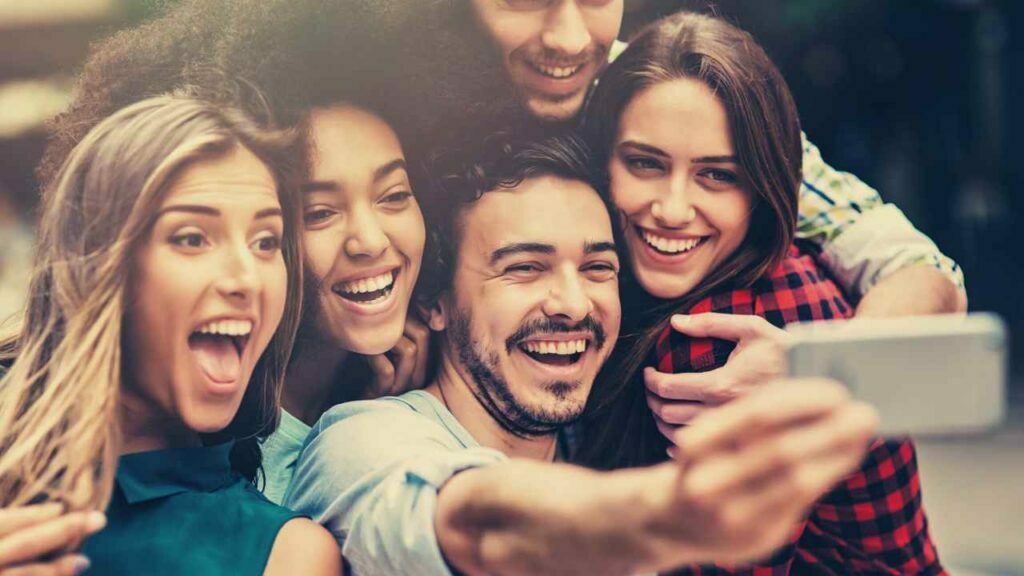This Day That Year: The Day the First Selfie was Taken
A “selfie” refers to a photograph that is taken by the person who is also in the photograph. These photographs are typically taken with a smartphone or camera, and are often shared on social media platforms. The concept of taking a self-portrait has existed for centuries, but the term “selfie” and the widespread popularity of the practice is a relatively recent phenomenon. The day the first selfie was taken is debated, but it is commonly believed to have been taken on December 25, 1839 by Robert Cornelius, an American pioneer of photography.
The History of the Selfie
The concept of self-photography has existed for centuries, with the earliest known self-portrait dating back to 1839. However, the term “selfie” and the widespread popularity of the practice is a relatively recent phenomenon.
In the early 2000s, the rise of digital cameras and social media platforms like MySpace and Facebook allowed for easier sharing of personal photos. As smartphones became more advanced, the front-facing camera became a standard feature, making it even easier for people to take selfies.
The rise of the selfie in the digital age can be attributed to the widespread accessibility of smartphones and social media platforms. The ability to easily take, edit, and share photographs with a global audience has made the selfie a ubiquitous part of modern culture. Social media platforms like Instagram and Snapchat have also played a large role in popularizing the practice, with features like filters and face-altering lenses encouraging people to take and share more selfies.
The impact of smartphones and social media on the popularity of selfies is undeniable. The ease with which people can now take and share selfies has led to a massive increase in the number of selfies being taken and shared. This has led to the creation of a new form of self-expression, where people can use selfies to create and control their online image. It has also led to criticism for promoting vanity, and for the negative impact it has on self-esteem and mental health.

The Day the First Selfie was Taken
The first known selfie was taken by Robert Cornelius, an American pioneer of photography, in 1839. Cornelius was an amateur chemist and photography enthusiast who operated a daguerreotype studio in Philadelphia. He took the photograph of himself outside his family’s lamp-making and metal-plating business.
The photograph is a full-length portrait of Cornelius, who is standing in front of a painted backdrop. He holds a chin rest in his left hand and has his right hand tucked into his waistcoat. Cornelius took the photograph by removing the lens cap, running into the frame, and then replacing the lens cap. The photograph was taken on October 13, 1839 and was later printed in 1845.
The photograph is significant because it is the first known instance of a person taking a photograph of themselves, predating the invention of the word “selfie” by over 150 years. The photograph is also significant for its technical achievement, as the exposure time for daguerreotype photographs at the time was several minutes, making it difficult to hold the pose for that long.
In conclusion, the first ever selfie was taken by Robert Cornelius on October 13, 1839, which predates the invention of the word “selfie” by over 150 years and it is considered as a pioneering achievement in the history of photography. The photograph is an early example of the human desire to document and share one’s own image, a desire that continues to drive the popularity of selfies in the digital age.
The Future of Selfies
Selfies are likely to continue to be popular in the digital age, as technology continues to advance and make it easier for people to take and share them. With the constant advancements in technology, the quality of selfies is expected to improve, with features like better cameras, more advanced editing tools, and augmented reality (AR) technology.
Advancements in technology are also expected to change the way people take and share selfies. For example, virtual reality (VR) technology may allow people to take immersive selfies that can be shared in a virtual environment. Similarly, the use of 3D scanning technology and AI-based background removal feature can make the selfies more realistic and professional.
The role of selfies in shaping our understanding of self-representation in the digital age is also likely to evolve. As people become more accustomed to sharing their personal images online, they may also become more comfortable with self-expression and self-promotion. However, it is also possible that the constant sharing of selfies may lead to a new form of self-consciousness, where people feel pressure to present a perfect image of themselves online.

Conclusion
In conclusion, the future of selfies is expected to be shaped by the advancements in technology, making it easier to take and share them. But, it is also important to consider the impact of selfies on self-representation and self-expression in the digital age. As technology continues to change, the way we use and think about selfies is likely to evolve as well.
The first known selfie, taken by Robert Cornelius in 1839, has had a lasting impact on the history of photography. It was a pioneering achievement that predates the invention of the word “selfie” by over 150 years. The photograph is an early example of the human desire to document and share one’s own image, a desire that continues to drive the popularity of selfies in the digital age.
The first selfie has also played a significant role in shaping the way we understand and use self-photography today. The invention of the smartphone and the rise of social media have made it easier than ever before for people to take and share selfies, leading to the creation of a new form of self-expression. Selfies have become an integral part of modern culture and have played a role in shaping our understanding of self-representation in the digital age.
However, the selfie culture has also been criticized for promoting vanity and for the negative impact it has on self-esteem and mental health. It has become important to understand how this culture is affecting us and how we can use it for positive change.
In conclusion, the first selfie taken by Robert Cornelius has played a significant role in shaping the way we understand and use self-photography today. It is a pioneering achievement in the history of photography and continues to inspire the way we express ourselves in the digital age.

The Knowledge Hub is intended for a wide range of audiences, including students, professionals, and anyone who is curious about the world and wants to expand their knowledge base. It can be useful for research, education, and personal curiosity. The Knowledge Hub is constantly updated to reflect the latest information and insights, and our visitors are encouraged to check back often for new content. Thank You.
We also have live online classes where we teach 2 courses which are given below. Please go through them and if interested you can take a Free Trial Class.





